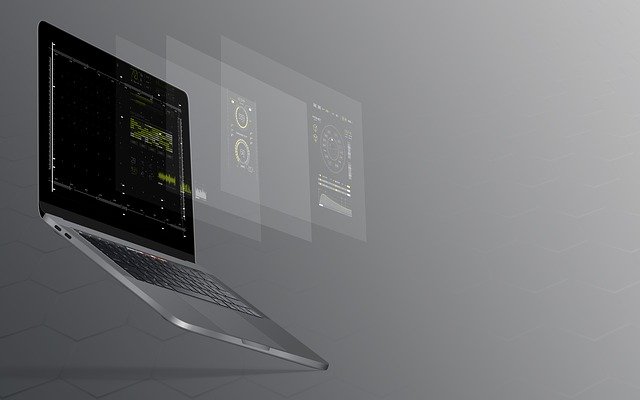5 Influences Of Industry 4.0 and how it will change the world as we know it
Are you tired of hearing about industry 4.0? As a manufacturer, you are probably bombarded on a daily basis by messages telling you that you need to get ready to embrace these major changes or risk becoming obsolete. Is this just hype and scaremongering, or is there some substance to these warnings? We’ve written this blog to serve up the main facts you need to know industry 4.0 and the changes it will bring to the world of manufacturing and to society as a whole.
New technologies like big data, smart factory technology, cyber-physical systems, Internet of Things and interoperability make these previously unimaginable improvements possible. Together with newer technologies like 3D printing, self-driving vehicles, robotics, AI, wearables and all types of automation, the world around us is changing fast.
In the world of manufacturing today, we can slap a sensor on almost any piece of machinery, collect any type of data from that machine and feed that data back into semi-intelligent systems (powered by AI and machine-learning ). In practice, this means that we can interpret data and use these interpretations to kick-off processes, without much need for human intervention. These game-changing capabilities mean that things will be produced faster and better than ever before and that factories of the future will continuously use the data they gather to make further improvements or enhancements. With such a vision of the future, it’s not hard to see why factories who do not adopt these technologies will be left behind.
With these new technologies flooding the manufacturing space, we can manufacture items more efficiently than ever before, but that’s not where the benefit of industry 4.0 ends. The true power of Industry 4.0 lies in the global picture created when all these machines and people work seamlessly together to create uber-efficient systems that effectively run themselves.
If we had to sum up Industry 4.0 in a few words, we’d say it is about inter-connectedness on a formerly unimaginable scale. According to Deloitte’s Forces of Change study, “Industry 4.0 … marries advanced manufacturing techniques with the Internet of Things to create a digital manufacturing enterprise that is not only interconnected, but communicates, analyzes, and uses the information to drive further intelligent action back in the physical world.”
The possibility of total interconnectivity is what is really creating waves in the world of manufacturing. But this is only the beginning of what is to come. The impact of industry 4.0 will reach far beyond purely the manufacturing sphere and will affect all of us in multiple ways.
Here are some trends brought upon us by industry 4.0 that will change the world as we know it.
1. Consumer demand for Customisation
An article put out by Hewlett Packard Enterprise states that new manufacturing technologies like those we are seeing with industry 4.0 will make it possible to customize products on a whole new level. According to HP, “We will see a massive increase in customized solutions. You will be able to customize and configure products to your needs on a detailed level, including everything from cars to personalized medicine.” The consumer of the future will demand more and more products that are customized to their specific requirements and this is something that the forward-thinking manufacturer will need to prepare for.
2. The need for instant gratification
Not only will it be possible to manufacture things faster and get them to the consumer faster due to the increased overall efficiency of factories, but it will also be possible to pop down to the local store and print many simple items you may need. While this sounds pretty unbelievable, it’s becoming more a reality. There are already many 3D printing services in existence across the USA. These range from rapid prototyping services to 3D software services. These can be used to print anything for jewelry to a bicycle seat and spare parts for electrical items. As such services become more mainstream and detract from the jobs usually done by today’s factories, the item that manufacturers will be called upon to produce may change.
3. Logistics will change or disappear
The other side of the 3D printing phenomenon means that shipping and logistics will change. As 3D is rolled out on an industrial scale, the demands for transportation of goods will decrease as goods will be produced in local printing facilities visited by the consumer themselves. In the article by Hewlett Packard Enterprise cited above, the author states, “we are already working with companies that don’t ship but build spare parts across the globe. Which means less global footprint and increases speed and innovation and will also help us bring jobs back.” Food for thought indeed!
4. Unrecognizable jobs
In another blog published in Visual Factories’ websites, “Will Humans become Obsolete,” we discussed the burning question of human obsoletion in the era of robotic automation. We recommend reading this for a fuller understanding of the issues at hand. As you will read there, Industry 4.0, especially when coupled with machine learning and artificial intelligence, will substantially change conditions for workers but not necessarily in a bad way. While many repetitive jobs will disappear, as many new ones will be created and these will be of a more skilled and technical nature Without a doubt, incredible new opportunities for employment will be created by industry 4.
5. Changing the location of manufacturing plants
The enduring popularity of China as a location to manufacture goods has been largely due to the availability of cheap, skilled labor but even this is changing, as you can read in our blog “What is the real difference between manufacturing in China vs the USA? As robots become more ubiquitous on production lines across the world obliterating, the need for mass human manpower could decrease possibly paving the way for more homegrown manufacturing. As manufacturing change, the labor advantages introduced by countries like China and other currencies could become less critical. As Hewlett Packard Enterprise warn, “many high-cost countries are scared about robotics, but already have hundreds of these robots in their industries, which will increase into the thousands. But it is important to make this shift carefully. Much manufacturing will move back from China and closer to the consumers.”
What does this mean for you?
Those of us that are following Industry 4.0 trends closely can see that it is not only the efficiency of production in factories themselves that will change but there will also be major shifts in demand for products, need for human labor and the location of manufacture. The types of items that will be in demand in the future, may also change as demand for customized products takes hold. Any manufacturer in the market today needs to remain plugged into information sources to watch and anticipate how these major shifts will affect their business.




